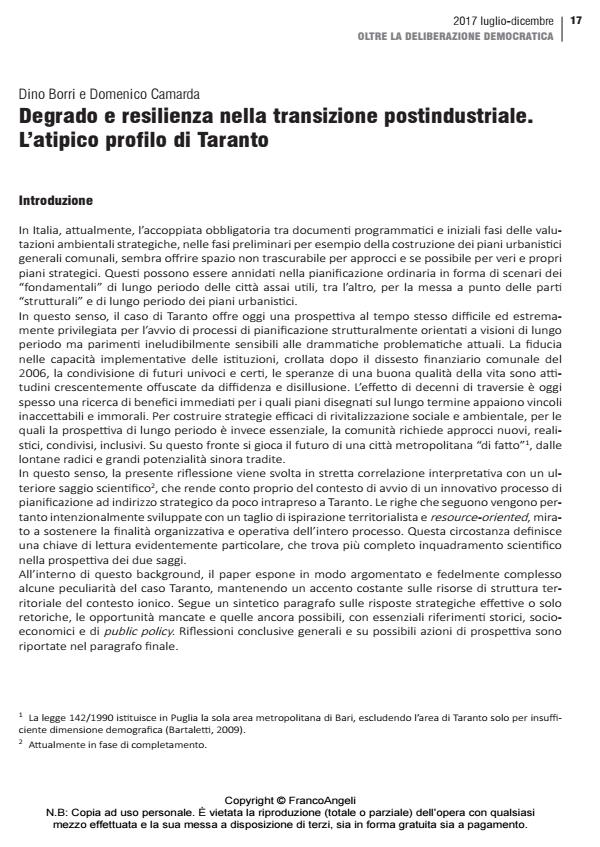Degrado e resilienza nella transizione postindustriale. L’atipico profilo di Taranto
Journal title CRIOS
Author/s Dino Borri, Domenico Camarda
Publishing Year 2017 Issue 2017/14
Language Italian Pages 12 P. 17-28 File size 256 KB
DOI 10.3280/CRIOS2017-014003
DOI is like a bar code for intellectual property: to have more infomation
click here
Below, you can see the article first page
If you want to buy this article in PDF format, you can do it, following the instructions to buy download credits

FrancoAngeli is member of Publishers International Linking Association, Inc (PILA), a not-for-profit association which run the CrossRef service enabling links to and from online scholarly content.
Dino Borri, Domenico Camarda, Degrado e resilienza nella transizione postindustriale. L’atipico profilo di Taranto in "CRIOS" 14/2017, pp 17-28, DOI: 10.3280/CRIOS2017-014003